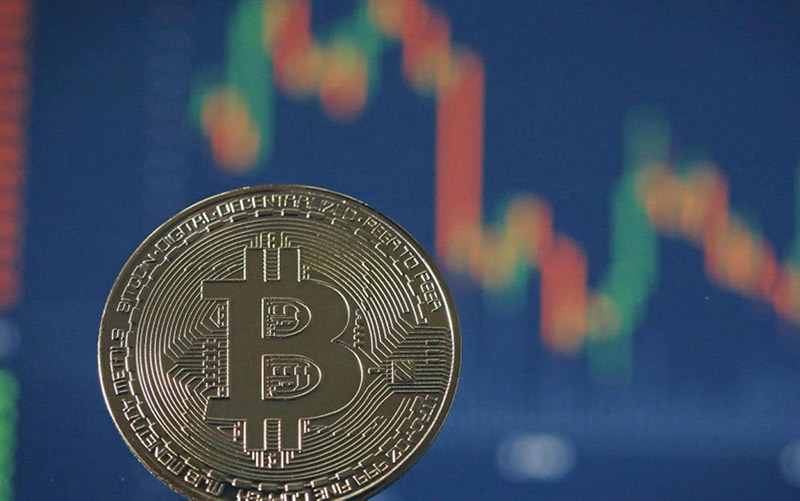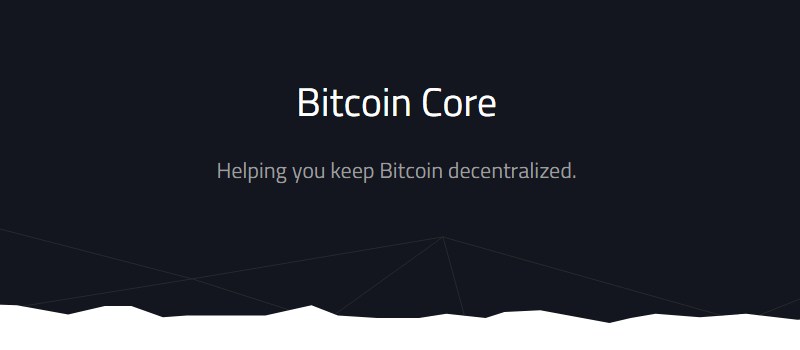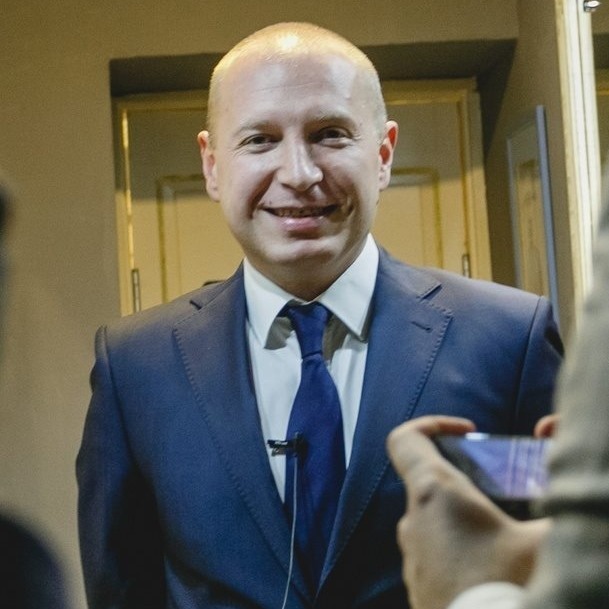Since 2017 we’ve been witnessing rapid and continuing growth of Bitcoin and other digital currencies. According to Coinmarketcap’s data the price of Bitcoin has increased by three times and now it costs almost $6,500. In the given article we are going to find out the way how the whole Bitcoin mechanism is carried out and how we can start working with it.
The general notion of Bitcoin
How can we define bitcoin in simple words? This is a new generation of decentralized digital currency which operates only on the Internet. No one has control over it and transactions occur via millions of computers around the world via special programs for calculating mathematical algorithms. This is the essence of bitcoin.
With bitcoins you can buy whatever you want on the Internet. But unlike physical dollars, euros or kronas, it has one key privilege – decentralization and independence. A controversial notion, regarded by many as a benefit, and causing suspicion in others.
Bitcoin was first developed by unknown person Satoshi Nakamoto in 2009. He offered an electronic payment system based on mathematical calculations. In essence, the system of Bitcoin should guarantee rapid transactions, no third-party involvement (bank or cash desk) and a high level of security.

Image source: CNBC.com
How does Bitcoin work?
The process of creating Bitcoin can be compared to the mining of gold. To increase the value of banknotes, it was necessary to increase the production of gold. Thus, the main feature of bitcoin creation is the constant complication of the calculation in algorithm, that is each new “coin” is extracted with the expense of more time and resources.
For the creation of the first bitcoins it was enough to have a usual computer. However, currently the need to increase the power of the system at the expense of expensive computer equipment has increased. That is why the very process was called “mining” and developer programmers have begun to be called “miners”. So miners get a salary for gold mining, but programmers receive a reward for Bitcoin mining in the form of the same Bitcoins.
Blockchain – the basis for Bitcoin
The whole Bitcoin system is built on the blockchain technology. Blockchain is a continuously growing list of data records, called blocks, which are linked and cryptographically secured. The block closes after the digital signature is applied. After this a new block has to be created. Bottom line: blockchain is the technology resistant to data modification by design.
Now, let’s explain it in a simple way. Imagine, that each transaction in Bitcoin is written on the separate page. The sequence of pages forms a chapter of the book – the block. To write a new page (carry out a new transaction) you need to scroll back all past pages and chapters. It means, that every new transaction made involves old blocks (turning over the pages of book). Thus, blockchain is a large open database, in which the encrypted information about all transactions that have been made, is stored. Blockchain is the basis of a constant growth of Bitcoin rate.
How to get started with Bitcoin
Before mining the cryptocurrency on your computer, you need to have certain tools/equipment that would be your Bitcoin mining hardware. So, let’s consider them one by one:
- GPU card is a key element in the process of mining the cryptocurrency. It has to be powerful enough, e.g. at level of AMD Radeon Sapphire RX 580 with 8GB. The processor does not matter much, as well as the amount of RAM, but at least 4GB would be fine.
- Other general mining hardware requirements: a PC with constant Internet connection, at least 145GB disk space, operating system – Windows 7/8/10, Mac, or Linux.
- An online exchange or a website where you can buy Bitcoins, plus a digital wallet to receive and store coins. First, check if there are official exchanges in your country. If yes, you can sign up and transfer money from your bank account to buy Bitcoins. In countries where there aren’t any Bitcoin exchanges, you have to go online to buy and sell cryptocurrency. You may use Debit cards, Payza, Payoneer, PayPal, CEX.io etc.
- A mining pool – see a paragraph below.
- To store Bitcoin you need an electronic wallet.
- Bitcoin mining software, for example the Claymore’s Dual Ethereum miner is quite popular.
Well, that’s all you need just to start with Bitcoin. You have to install and setup everything mentioned above, wait for the first “coins” dropped into your wallet, and start mining.
Keeping Bitcoin in a secure wallet
Before you join a mining pool you need a Bitcoin wallet. And again, Bitcoin is not a typical currency you store in a bank. You on your own are responsible for security of your bitcoins and your digital wallet. Such wallet has a private key to access your Bitcoin address. Wallets are accessible on your laptop, mobile phone or other gadgets.

Image source: Bitcoin.org
For Bitcoins different kinds of wallets are suitable.
- Online wallet – to access it from any device with a password.
- Mobile wallet – usually operating via a mobile app, Android and/or iOS.
- Software wallet – installed directly on your PC (the original software wallet is the Bitcoin Core protocol).
- Hardware wallet – to store user’s private keys on a device. This option is quite secure due to working offline, thus less risk of hacking.
- Paper wallet – sounds old-school, but it is just a piece of paper on which the private and public keys of a Bitcoin address to print on. With services like Wallet Generator or Bitcoin Paper Wallet you can create a new address and print the wallet on your printer.
Just be careful since many of online wallets may be fraudulent.
Bitcoin pools
Mining pools are groups of Bitcoin miners who cooperate with each other. They pool their resources together, and they agree to share rewards equally, according to the number of shares they’ve contributed to solve blocks. However, miners can redirect their hashing power to another mining pool at any time.
When choosing a mining pool, you have to understand that the most mining pools are in China (about 80%). For new miners it is advisable to use Slush Pool since it was the first Bitcoin pool and it is considered to be the most reliable at the present time. The most popular Bitcoin mining pools, currently, are:
Well, as you can see there are many mining pools to choose from and most of them have servers in each country.
Bitcoin mining software
The most popular and common mining programmes are Bitcoin Miner, CGMiner and BFGMiner. Let’s consider their main characteristics.
Bitcoin Mining – can be used on Windows 10 and Windows 8.1. It has got a user-friendly interface with an opportunity to turn on power saving mode and connect to pools. One of the most useful features of Bitcoin Miner is a report of your profit. It shows you whether your mining profitable or not. Check out their video guide to what is Bitcoin mining:
CGMiner is the most popular open source GPU/FPGA/ASIC miner among Bitcoin users which is available for Windows, Linux and OS X. Cpu Miner – a simple client program that performs pooled mining or solo mining. It also has such features as self-detection of new blocks, support of several GPUs, binary loading of kernels and fan speed control. BFGminer is very similar to CGMiner, but it is designed for FPGA and ASICs.
Of course, there are much more Bitcoin mining programmes.
You might have noticed the ASIC acronym among mining software. Application specific integrated circuits, ASIC, are the alternative tools for mining on a professional level. This is motherboards and power supplies designed into single units, specifically developed for currency mining at the chip level.
What’s the best mining software?
Well, its subjective and depends on type of mining, setup and personal goals. We’ve set apart top 15 bitcoin miners based on features, performance, OS compatibility, pros and cons.
| Miners | License | Platforms | Disk size | Written on | License for sharing | Link | Forum thread | |
| 1 | BFGMiner | Free | Linux, Windows | 6.56 MB | C | GPL-3 | Github | Link |
| 2 | Ccminer | Free | Linux, Windows | 13.7 MB | C++ | GPL-3 | Github | Link |
| 3 | CGMiner | Free | Mac, Linux, Windows | 7.26 MB | C | GPL-3 | Github | Link |
| 4 | Claymore’s Dual Ethereum | Free | Linux, Windows (x64) | 25.2 MB | n/a | Copyright | Github | Link |
| 5 | cpuminer | Free | Linux, Windows (x64) | 4.78 MB | C | GPL-2 | Github | Link |
| 6 | EasyMiner | Free | Windows | 28.31 MB | n/a | Copyright | Website | n/a |
| 7 | Excavator | Free | Windows (x64) | 26.5 MB | C++ | Copyright | Github | Link |
| 8 | MultiMiner | Free | Mac, Linux, Windows | 10.6 MB | C# | GPL-3 | Website | Link |
| 9 | Nevermore | Free | Linux, Windows | 42.2 MB | C | GPL-3 | Github | n/a |
| 10 | OptiminerZero | 2.5% fee | Linux, Windows | 5.03 MB | n/a | GPL-3 | Github | Link |
| 11 | Phoenix | Free | Mac, Linux, Windows | 5.83 MB | Twisted | MIT | Github | Link |
| 12 | Poclbm | Free | Mac, Linux, Windows | 7.25 MB | Python | PD | Github | Link |
| 13 | Ravencoin Miner | Free | Linux, Windows | 40.8 MB | C++ | GNU | Github | Link |
| 14 | Sgminer | Free | Windows | 6.45 MB | C | GPL-3 | Github | Link |
| 15 | Suprminer | Free | Linux, Windows | 42.5 MB | C++ | GPL-3 | Github | n/a |
All these apps work on Windows OS, while some of them also work on Linux and Mac OS. Each is an open-source project published on Github and free to use by anyone. Each can be used both for solo and pool mining. Most of those mining tools have many common features, e.g. networking scheduler, support of various protocols, new blocks detection, hashratio support, etc.
As for differentiating features, we can say the following:
- CGMiner, BFGMiner and EasyMiner gained the most popularity among users mining in Windows and Linux.
- Cpuminer and Excavator are only compatible with 64-bit systems.
- MultiMiner is famous for supporting almost any kind of mining algorithms.
- Mac OS users will benefit from Phoenix and POLCBM.
- Only EasyMiner and MultiMiner have a graphic interface, other apps, unfortunately, are displayed in console-based menu.
Now, let’s focus on distinctive features of those bitcoin mining tools.
Mining software comparison
First, crypto mining algorithms. Cryptocurrencies use various set of calculations, aka hashing algorithms, aka crypto mining algorithms, i.e. unique numbers for text strings, serving to secure the transactions. SHA-256, Ethash, Scypt, CryptoNight are among the most popular algorithms. Let’s take 9 main crypto algorithms and compare our tools.
| Blacke2b | Crypto Night |
Ethash | Groestl | Lyra2RE | NeoScrypt | Quark | Scrypt | SHA256 | ||
| 1 | BFGMiner | – | – | – | – | – | – | – | ✔️ | – |
| 2 | Ccminer | – | ✔️ | – | ✔️ | ✔️ | ✔️ | ✔️ | ✔️ | ✔️ |
| 3 | CGMiner | – | ✔️ | – | – | – | ✔️ | – | ✔️ | ✔️ |
| 4 | Claymore’s Dual Ethereum | ✔️ | ✔️ | ✔️ | – | – | – | – | – | – |
| 5 | Cpuminer | ✔️ | ✔️ | – | ✔️ | ✔️ | – | ✔️ | ✔️ | – |
| 6 | EasyMiner | – | – | – | – | – | – | – | ✔️ | ✔️ |
| 7 | Excavator | ✔️ | ✔️ | – | – | ✔️ | ✔️ | – | – | – |
| 8 | MultiMiner | – | ✔️ | ✔️ | ✔️ | ✔️ | ✔️ | ✔️ | ✔️ | ✔️ |
| 9 | Nevermore | – | ✔️ | – | ✔️ | ✔️ | – | – | – | ✔️ |
| 10 | OptiminerZero | – | – | – | – | – | – | – | – | – |
| 11 | Phoenix | – | ✔️ | ✔️ | ✔️ | – | ✔️ | – | – | – |
| 12 | Poclbm | – | – | – | – | – | – | – | – | – |
| 13 | Ravencoin Miner | – | – | ✔️ | ✔️ | ✔️ | – | ✔️ | ✔️ | ✔️ |
| 14 | Sgminer | – | – | – | – | ✔️ | ✔️ | ✔️ | ✔️ | – |
| 15 | Suprminer | – | ✔️ | – | – | ✔️ | – | ✔️ | ✔️ | ✔️ |
Mining software: hardware support
Next, let’s see which types of mining hardware our 15 tools are compatible with. As we see, only CGMiner, BFGMiner and MultiMiner support ASICs, so there’s one mark in a checklist right away. Several of them support CPU and FPGA mining, as they all mostly are compatible with GPU, primarily. Find all the info in the table.
| ASIC | CPU | AMD GPU | Nvidia GPU | FPGA | ||
| 1 | BFGMiner | ✔️ | ✔️ | ✔️ | – | ✔️ |
| 2 | Ccminer | – | – | – | ✔️ | – |
| 3 | CGMiner | ✔️ | ✔️ | ✔️ | ✔️ | ✔️ |
| 4 | Claymore’s Dual Ethereum | – | – | ✔️ | ✔️ | – |
| 5 | Cpuminer | – | ✔️ | ✔️ | – | – |
| 6 | EasyMiner | – | ✔️ | – | – | – |
| 7 | Excavator | – | – | ✔️ | ✔️ | – |
| 8 | MultiMiner | ✔️ | ✔️ | ✔️ | – | ✔️ |
| 9 | Nevermore | – | – | – | ✔️ | – |
| 10 | OptiminerZero | – | – | ✔️ | ✔️ | – |
| 11 | Phoenix | – | – | ✔️ | ✔️ | – |
| 12 | Poclbm | – | – | ✔️ | – | – |
| 13 | Ravencoin miner | – | – | ✔️ | ✔️ | – |
| 14 | Sgminer | – | ✔️ | ✔️ | ✔️ | – |
| 15 | Suprminer | – | – | – | ✔️ | – |
Pros & cons / Summary
Based on all parameters, general good and bad sides, performance, we’ve given our subjective rating to each mining software in the list, as a summary.
| Cons | Pros | Editor rating | ||
| 1 | BFGMiner | Hardware overclocking, documentation, options for manual data entering. | Console menu, some settings must be set manually. | 6 |
| 2 | Ccminer | Instructions about hardware, open source, support for many algorithms. | Console menu, compatible with Nvidia GPU only. | 8 |
| 3 | CGMiner | GPU overclocking, cross-platform, different hardware support. | Console-basemenu, difficult for novices. | 7 |
| 4 | Claymore’s Dual Ethereum | “Dual mining” mode, subprograms for hardware, GPU overclocking. | Console menu, complicated in “dual mining” settings. | 6 |
| 5 | Cpuminer | Low size, many algorithms – 56 in total. | Console menu, support for x64 systems only | 9 |
| 6 | EasyMiner | Friendly to beginners, GUI interface, built-in chat. | Support for CPU mining only, and only 3 algorithms. | 5 |
| 7 | Excavator | Rare algorithms, Android client for monitoring, automatic search for performance/energy consumption balance. | Console menu, support for x64 systems only. | 7 |
| 8 | MultiMiner | GUI menu, easy in use, many algorithms. | Requires additional software to function properly. | 10 |
| 9 | Nevermore | Optimized for Ravencoin mining, 15 algorithms, control commands based on currency names. | Console menu, supporting only nVidia GPU. | 6 |
| 10 | OptiminerZero | Low size, different versions for different hardware. | Console menu, 2.5% fee to developer, only 1 algorithm. | 4 |
| 11 | Phoenix | iOS support, optimized for Ethash, GPU overclocking | Console menu, source code not available. | 6 |
| 12 | Poclbm | Fine kernel tuning tools, different OS support. | Console menu, support for AMD GPU only. | 4 |
| 13 | Ravencoin | Good performance, 31 algorithms, detailed guides. | Console menu, takes a lot disk space. | 8 |
| 14 | Sgminer | Support for GPU & CPU, optimized for Monero mining. | Console menu, only for Windows. | 6 |
| 15 | Suprminer | Support for Resolver, DarkCoin, Signatum – total 32 algorithms, detailed manual. | Console menu, support for nVidia GPU only. | 7 |
Notice a mistake, wrong data or have a different opinion? Let us know in comments.
Featured image source: Bitcoingambling.net

